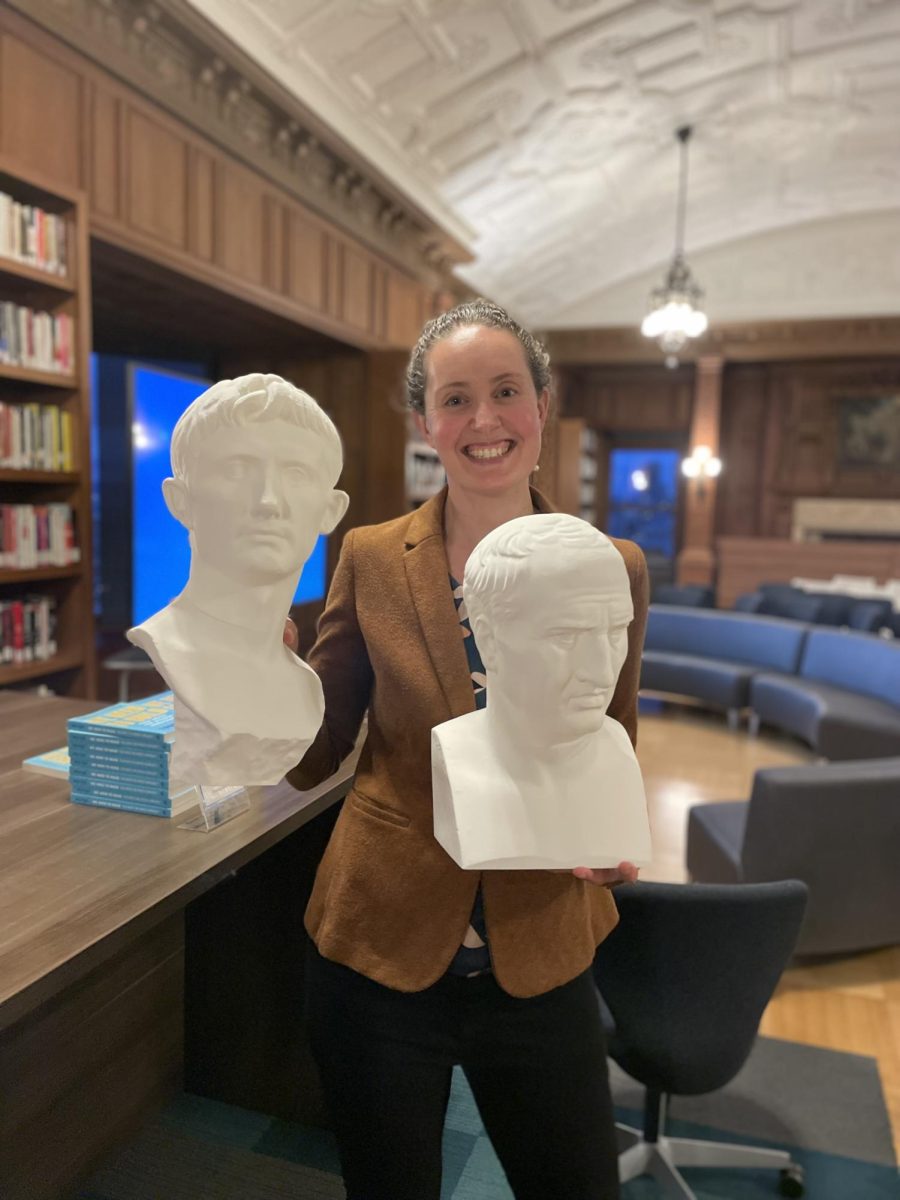For 8 years, Convent and Stuart Hall has hosted a yearly speaker for the annual Latin Lecture. This year, the school was pleased to welcome Professor Sarah Olsen, an associate professor of Classics at Williams College in Williamstown, Massachusetts.
The lecture was held in the Williams Library and focused on Greek dance, largely because of the increased focus this school year on the performing arts.
“What was unique [about the lecture] was the focus on performance this year, which was intentional because I chose her to complement the new PA block that we’re having,” says High School Latin Teacher Dr. David Jacobson.
This talk explored the topic through a lens similar to that used by previous speakers of this series.
“Thematically, her talk addressed the same types of issues that all previous speakers have addressed, namely power relationships, explored in this case through gender and performance, so Greek and Roman dance,” explains Jacobson.
By looking at Greek dance through this lens of gender and power Dr. Olsen explained how dance reinforced social norms for Greek men and women.
As an example, early in the lecture, Olsen brought up the shield of Achilles from the Iliad. The shield not only contains battle scenes but also a huge dancing scene that featured young men and women. The youth dancing within the depiction are described as “worth many cows” and have ornaments made from valuable materials—like golden knives, silver sword belts, and fine garlands.
The significance of this scene’s imagery demonstrates how dance indicates social status and symbolizes change—in this case, marriage.
While dance leading up to marriage was mostly co-ed (like the example above), dance otherwise was mostly split up between the genders.
For women, dance in recorded contexts mostly consisted of dancing in honor of Artemis and in maiden choruses.
For men, dance not associated with marriage consisted of forms like Pyrrhic dance—Pyrrhichios, which was performed with military armor and weapons. Some scholars believe Pyrrhichios inspired the scene in Virgil’s Aeneid lines book 2 469-470:
“Vestibulum ante ipse primoque in limine Pyrrhus
exsultat telis et luce coruscus aena.”
Before the entrance itself and on the very threshold, Pyrrhus exults, glittering with weapons and the gleam of bronze.
As demonstrated from Pyrrhus’s actions in these lines, the purpose of the Pyrrhichios dance was to demonstrate masculinity through performance with armor and weapons. It also fostered collective bonding through displaying martial arts skills.
Another interesting aspect of this topic is the influence of Greek dance on later dance forms. Greek dance has played a huge role in the development of modern dance, especially in the early 20th century.
“Arguably, the ancient Greek forms—Greek art, Greek myth—have played a role in the development of dance throughout the European and American tradition, but ancient Greece was particularly important to some of the modern dance pioneers of the early twentieth century,” Olsen said. “The stories of ancient Greece and the representations of dance and Greek art are evocative and inspiring for the dancer’s practice, so Greek dance has an important role in the development of that tradition.”
This talk was well-received among the students even though the topic was dancing.
“I learned a lot about the instruments, which was pretty cool. I did not think the topic was going to be very interesting, but she [Dr. Olsen] made it very interesting,” says junior Pierce Quigley.
It was also enjoyed among the faculty, as these talks allow the whole community to learn so much.
“I always learn so much at these talks. Though I know a fair amount about the topic, it is always good to hear actual experts discuss it. Honestly, my favorite part of these every year is the excited responses of students and parents, who are excited to be learning new things that they never knew existed and they never would’ve explored on their own,” says Jacobson.
Overall, the eighth Latin lecture was a success, as Dr. Olsen took a typically dry topic and transformed it to be interesting for all through a unique lens of gender, power, and performance.

